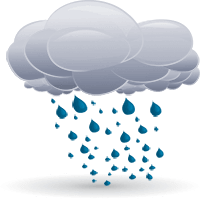According to K-State beef cattle experts with the Beef Cattle Institute, it is crucial to evaluate your management practices when it comes to cattle health in extreme cold conditions. Many were able to retreat indoors in the negative degree windchills much of our area faced just before Christmas, but for our cattle out on pasture, a warm barn is not always and option.
First off, water consumption may go down in winter compared to that of the summer, but it is still an important nutrient that cattle need through a cold snap. Another important factor to consider is giving cattle protection from the wind wherever possible. In addition to keeping them out of the wind, providing some sort of shelter can help keep cattle dry. Both are important in extreme cold.
This is where getting creative can come in handy. Dr. Tarpoff knows of a producer in western Kansas that parks stock trailers in pastures to give the cows a windbreak, and will open a small door on the trailer for calves to have more protection with bedding. Other beneficial windbreaks could be a line of planted trees, hay bales, metal framed tin walls, or stacked up old tires.
Cattle maintenance requirements will increase 50-100% when the temperatures drop drastically and the cattle are caught in cold temperatures with moisture. According to the Mesonet Cattle Comfort Advisor, a cow’s energy requirement increases 1% for each degree the index is below 32 degrees. This requirement will double if the animal’s skin is wet. For context, if the temperature is 20 degrees, with no moisture, then cattle will need an additional 12% of energy to maintain body condition. With moisture, that would double to 24%. Make sure that the starch content in a cow’s diet is less than half a percent of her body weight so it does not negatively influence forage digestion. The digestion of their ingested forages helps to keep their body warm.
No matter what cattle situation, it is important to offer some sort of bedding.
If cattle are given a protective barrier from the cold ground it is important on cold days. Their body will not have to work as hard to keep their body warm and thus keeping energy requirements down as much as possible.
Save the date for upcoming programs related to cattle and farm management. Feb. 20, will be “Cow-Calf & Risk Management” with KSRE Cow-Calf Specialist, Dr. Jason Warner and KSU Dept. of Ag Econ staff member, Dr. Jennifer Ifft. Meeting will be at the Eureka United Methodist Church, starting at 5:30 p.m. with a meal and program to follow at 6 p.m. On March 21, there will be a “Pond Management Workshop” with KSRE Fisheries & Aquaculture Specialist, Dr. Joe Gerken. The event will be in the Madison area, with pond visits, and a meeting and meal to follow at approximately 7 p.m. at the Sauder Center in Madison.
Information comes from K-State University beef cattle experts with the Beef Cattle Institute. Dr. Brian Lubers, Dr. A.J. Tarpoff, Dr. Brad White, Dr. Phillip Lancaster For more information regarding upcoming programs, Agriculture and Natural Resources, 4-H Youth Development, or K-State Research and Extension call the office at 620-583-7455, email me, Ben Sims, at [email protected], or stop by the office which is located inside the courthouse. Be sure to follow K-State Research and Extension- Greenwood County on Facebook for the most up-to-date information on Extension education programs and the Greenwood County 4-H program.


